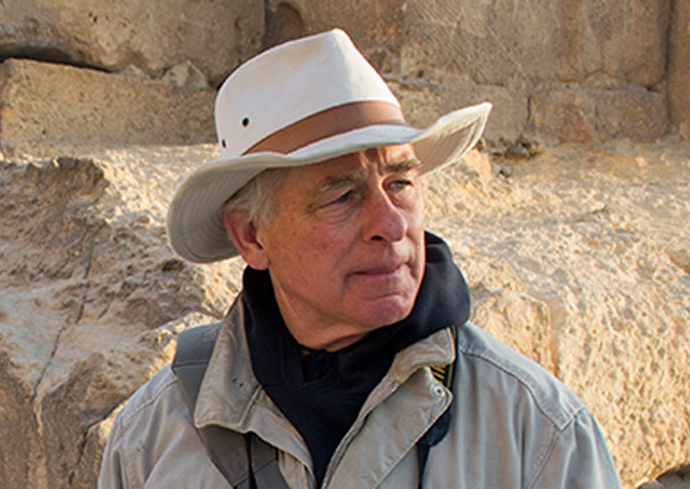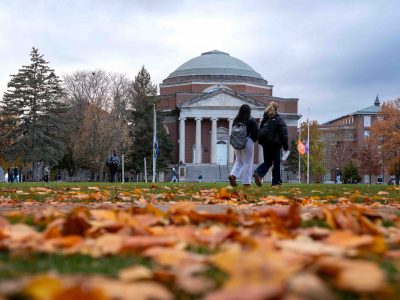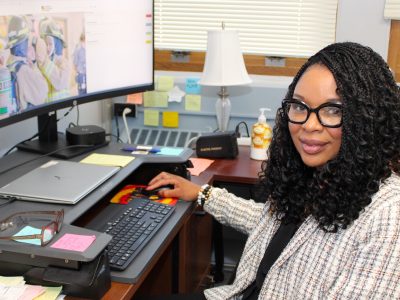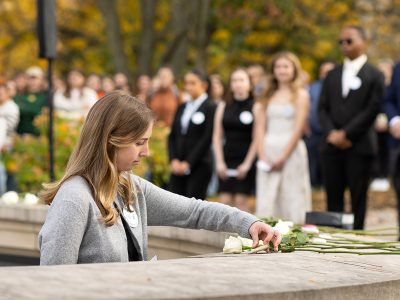Illuminating the Lives of the Pyramid Builders With Egyptologist Mark Lehner at the Phanstiel Lecture Nov. 1
In the sands of the Sahara, preeminent Egyptologist Mark Lehner has spent four decades helping to uncover the mysteries of the pyramids of Giza, the Sphinx and their surroundings.
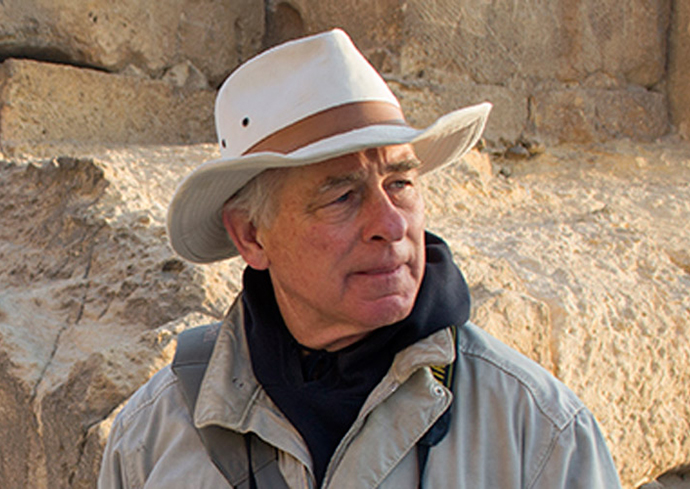
Whether it’s the ancient remains of plant life or a pyramid passageway or the city where the pyramid builders lived, the hidden remnants of an ancient empire continue to be unearthed. But it’s a greater understanding of the people that created the civilization that fascinates Lehner even more so.
“I realized I had to turn my back to the pyramids to truly understand them,” says Lehner, founder and president of Ancient Egypt Research Associates (AERA), who spent much of his time in recent decades studying other structures at the Giza Plateau, in the shadow of the pyramids. “Because if you don’t understand the people, their civilization, you don’t really understand the monuments themselves.”
Lehner will discuss his discoveries of ancient Egypt during the Phanstiel Lecture, “The People Who Built the Pyramids—How We Know,” on Friday, Nov. 1, at 5 p.m. Sponsored by the Howard G. and S. Louise Phanstiel Chair in Leadership, the event will be held in the K.G. Tan Auditorium in the National Veterans Resource Center at the Daniel and Gayle D’Aniello Building. Those attending are asked to register. A livestream will be available.
“Mark Lehner is a world-renowned Egyptologist whose work reveals new insights into the past,” says Christopher R. DeCorse, Distinguished Professor and chair of anthropology in the Maxwell School of Citizenship and Public Affairs. “Drawing on decades of research, Lehner takes us beyond the pyramids and monuments of ancient Egypt to reveal the everyday lives of the pyramid builders.”
Lehner’s archeological research has included mapping the Great Sphinx and discovering a major part of the Lost City of the Pyramids at Giza. Lehner directs the Giza Plateau Mapping Project, which conducts annual excavations of Old Kingdom settlements near the Sphinx and pyramids with a team of archaeologists, geochronologists, botanists and faunal specialists.
Lehner has appeared on National Geographic’s “Explorer” program, and on the “NOVA” programs’ “Riddles of the Sphinx” and “Secrets of Lost Empires” series. He is author of “The Complete Pyramids,” “The Red Sea Scrolls: How Ancient Papyri Reveal the Secrets of the Pyramids,” with Egyptologist Pierre Tallet, and “Giza and the Pyramids: The Definitive History,” with Egyptologist Zahi Hawass. His work has appeared in articles in National Geographic, Smithsonian and Archaeology.
Fragments of a Civilization
Lehner describes his work as piecing together the culture and people through the fragments that remain after thousands of years.
“We’re not doing the kind of archeology where we look for gold bowls and mummies. We’re actually doing the anthropology of pyramid building,” Lehner says. “We want to know: what were they eating? How did they live? It’s like the ’57 Chevy principle. You don’t need the whole Chevy to know that there was a ’57 Chevy. If you’re a car aficionado, all you need is a fender or a part.”
In the Lost City of the Pyramids, they carefully save these ancient remnants and reconstruct the lives of the people who lived 45 centuries ago, in the architectural footprint of a vast urban settlement. They have uncovered what scholars believe was the base of operations for crafting the pyramids and home to laborers, craftsmen and administrators.
These excavations provide unique insight into the beginnings of urbanism, bureaucracy and state formation in the Nile Valley.
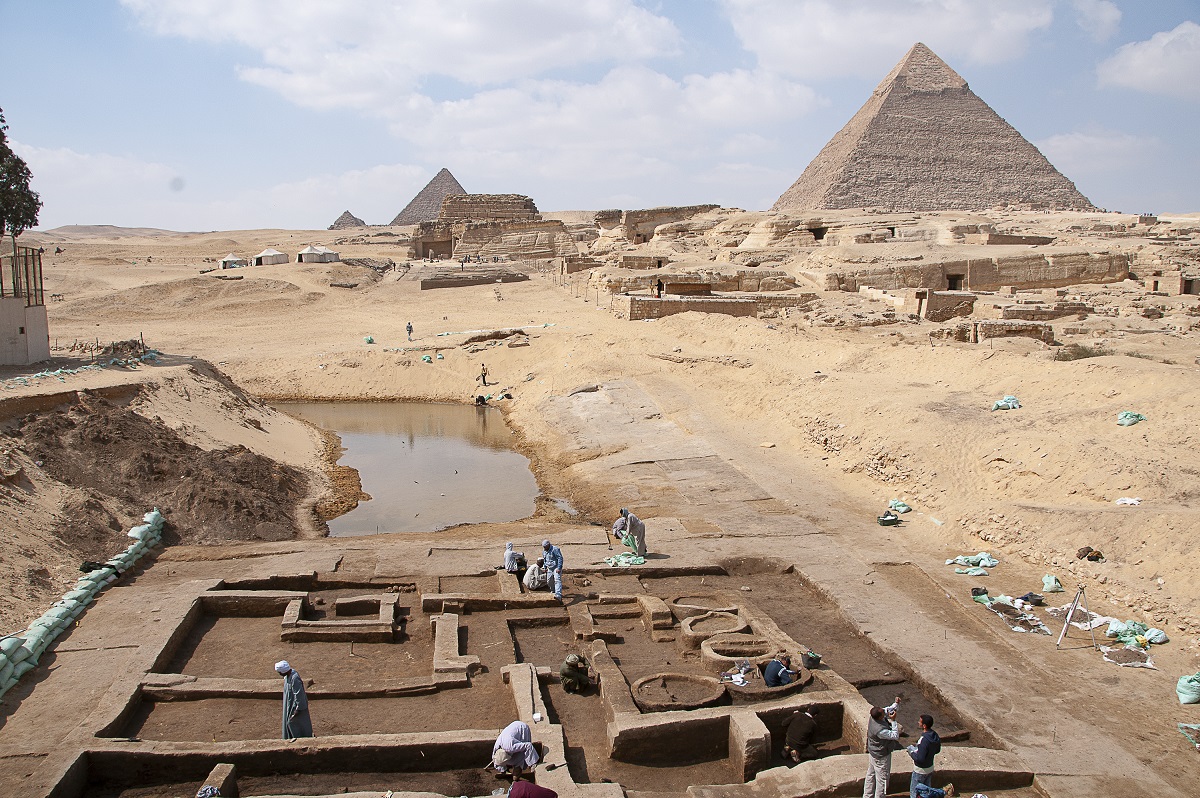
“It’s really one of the world’s first institutional buildings along the line of our universities, schools, hospitals, hotels—places for circulating people,” Lehner says.
Along with the architectural remains, the proof is in what Lehner calls “probably the most important archaeological discovery during my 50 years here at Giza.” In 2013, in the desert caves at Wadi el-Jarf near the Red Sea, Pierre Tallet and his colleagues found the world’s oldest inscribed papyri, written accounts by the people who built the pyramids.
The find was at a port of Khufu (the Egyptian king who built the Great Pyramid), where archeologists discovered a massive harbor for ships, work camps and barracks.
With the papyrus discovery and Lehner’s excavations, Lehner and Tallet combined their efforts to match archeology with text. Their work further advanced understanding of the people and the monuments they constructed—and how the work of pyramid building developed a prosperous civilization.
AERA’s archaeology has provided information of crucial importance for the history of urbanism, institutions, labor organization, state formation, bureaucracy, agriculture, animal husbandry and geoarchaeolgy, nautical archaeology, landscape architecture and more.
Field School for Egyptian Archeologists
Another important aspect of AERA has been its development of a comprehensive field school to teach young Egyptian archeologists to research and publish on discoveries in their homeland, training 391 archaeologists throughout the country.
“We call it archaeology as diplomacy because it just generated enormous goodwill,” Lehner says.
Lehner’s own professional path began with his college education in North Dakota, taking him to Cairo in 1973 as a study abroad student at the American University in Cairo where he received a B.A. in anthropology. He went on to work with various archeological projects in Egypt. He was later the field director and then director of the Sphinx Project sponsored by the American Research Center in Egypt (ARCE). In 1984, he began the Giza Plateau Mapping Project, sponsored by ARCE and Yale University where Lehner received a Ph.D. in Egyptology in 1990. In 1985, he founded AERA with Matthew McCauley.
During his early years in Egypt, Lehner became fascinated with the work of social psychologist Leon Festinger, tied to his curiosity about the real story behind the pyramids, which led to his lifelong interest in belief systems and why people believe things.
“We’re interested in how Egyptians build the pyramids. But my main interest is, how did the pyramids build Egypt?” Lehner says. “To build these early gigantic pyramids, they created a vast infrastructure that didn’t exist before.”
New farms and ranches and supply trade routes all the way up to Lebanon were developed. Much like the U.S. freeway system or the internet, “the infrastructure became more important in its own right than building a giant pyramid,” Lehner says. “You don’t arrive at that kind of an understanding unless you do the kind of archaeology that we’re doing, anthropological archaeology, where you dig into the settlements where pyramid builders lived.”
